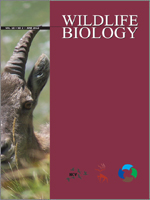Ranging behaviour is one of the most important aspects of the life history of many species. Spatial distributions of individuals in the wild is linked to factors such as foraging, mating, population density, availability of resources and competition. Accurate data on the spatial location of individuals over time is often difficult to collect. Here, we propose a new simple, non-invasive and economic method for collecting accurate spatial data usable for many different species of free-ranging animals. Our instrument for collecting animal locations consists of three elements: a laser range finder, a laser tilt sensor and a protractor. This instrument can obtain three-dimensional parameters of the space from a fixed point allowing the user to collect geographical locations of the animals and, in general, of any point of interest. The device we tested showed a very low average error among (1.76 ± 0.643 m) and within (1.79 ± 0.058 m) observers, and the locations we obtained were all within the 95% probability of the tolerance intervals for the 20 positions which we measured repeatedly with a Global Position System for each of 10 different test locations. We tested a range of different distances to the target points (from 20 to 222 m), and we propose formulas to calculate precision of the instrument inside this interval. Precision of estimated locations was between 0.32 to 3.55 m from the real location and it was slightly related to distance of the target point (r = 0.38, P = 0.054). As an example of its practical application, we present data on the use of the instrument within the framework of a study on a population of free-ranging individually tagged alpine marmots Marmota marmota.
How to translate text using browser tools
1 June 2012
The Animal Locator: a new method for accurate and fast collection of animal locations for visible species
Cristian Pasquaretta,
Giuseppe Bogliani,
Luigi Ranghetti,
Caterina Ferrari,
Achaz von Hardenberg

Wildlife Biology
Vol. 18 • No. 2
June 2012
Vol. 18 • No. 2
June 2012
Animal Locator
error estimation
home range
spatial data collection
territorial behaviour




